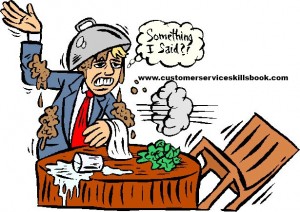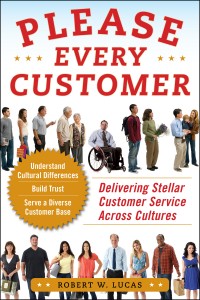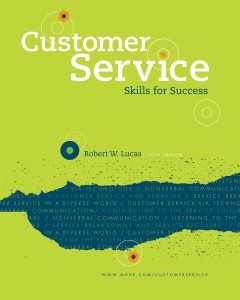Two Elements of Effective Customer Communication
Two key elements in making your interactions with customers successful are to recognize how you tend to communicate and understanding how the communication process works. It is up to each customer service representative, and other employees in any organization, to take responsibility for developing his or her communication skills and knowledge.
Start by assessing your current interpersonal communication skills level and then seek information and assistance to improve in deficit areas. The easiest way to find out how you communicate is to ask those who know you best. Unfortunately, many people are leery about requesting feedback because of what they might hear. Conversely, most people have difficulty giving useful feedback because they either never learned how to do it or are uncomfortable doing it. In any event, try it. Ask a variety of people for their feedback because each person will likely have a different perspective.
For strategies and techniques for improving interpersonal communication skills with customers get a copy of Customer Service Skills for Success. For ideas on communicating more effectively with customers from diverse backgrounds, try Please Every Customer: Delivering Stellar Customer Service Across Cultures.
About Robert C. Lucas
Bob Lucas has been a trainer, presenter, customer service expert, and adult educator for over four decades. He has written hundreds of articles on training, writing, self-publishing, and workplace learning skills and issues. He is also an award-winning author who has written thirty-seven books on topics such as, writing, relationships, customer service, brain-based learning, and creative training strategies, interpersonal communication, diversity, and supervisory skills. Additionally, he has contributed articles, chapters, and activities to eighteen compilation books. Bob retired from the U.S. Marine Corps in 1991 after twenty-two years of active and reserve service.
Make Money Writing Books: Proven Profit Making Strategies for Authors by Robert W. Lucas at Amazon.com.
The key to successfully making money as an author and/or self-publisher is to brand yourself and your company and to make yourself and your book(s) a household name. Part of this is face-to-face interaction with people at trade shows, library events, book readings, book store signings, blogging or guest blogging on a topic related to their book(s). Another strategy involves writing articles and other materials that show up online and are found when people search for a given topic related to a topic about which the author has written.
If you need help building an author platform, branding yourself and your book(s) or generating recognition for what you do, Make Money Writing Books will help. Bob’s popular book addresses a multitude of ideas and strategies that you can use to help sell more books and create residual and passive income streams. The tips outlined in the book are focused to help authors but apply to virtually any professional trying to increase personal and product recognition and visibility.










